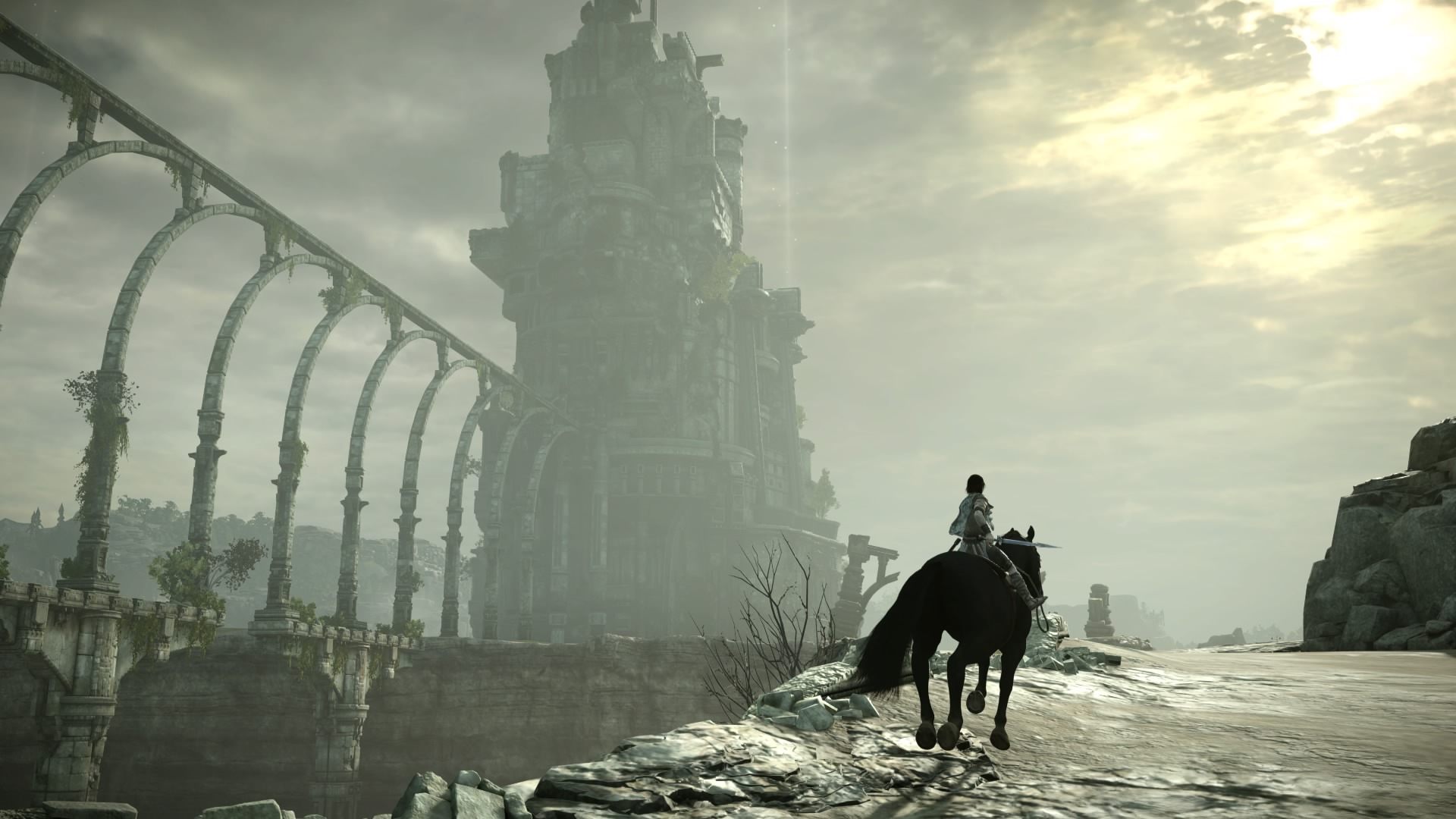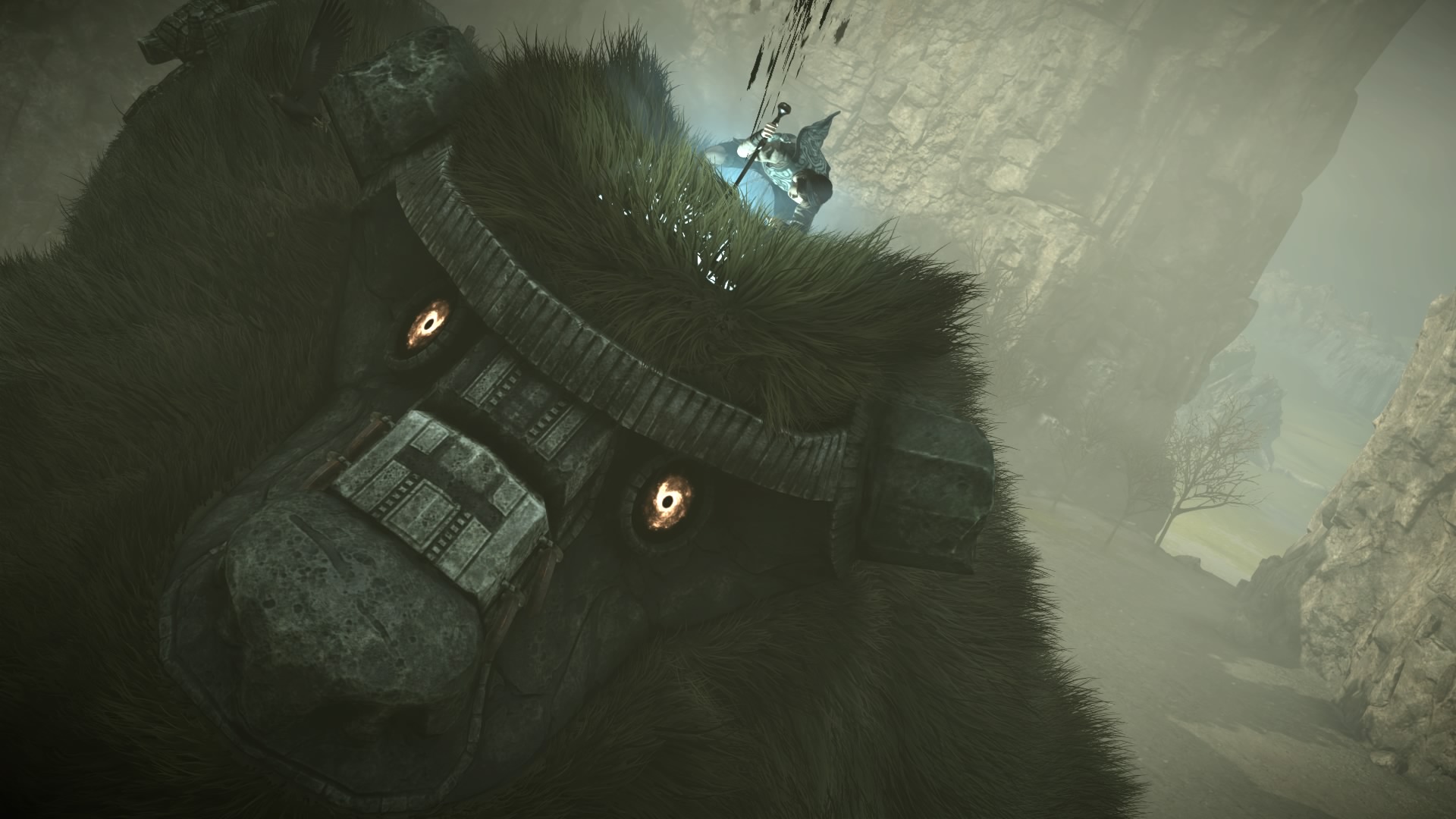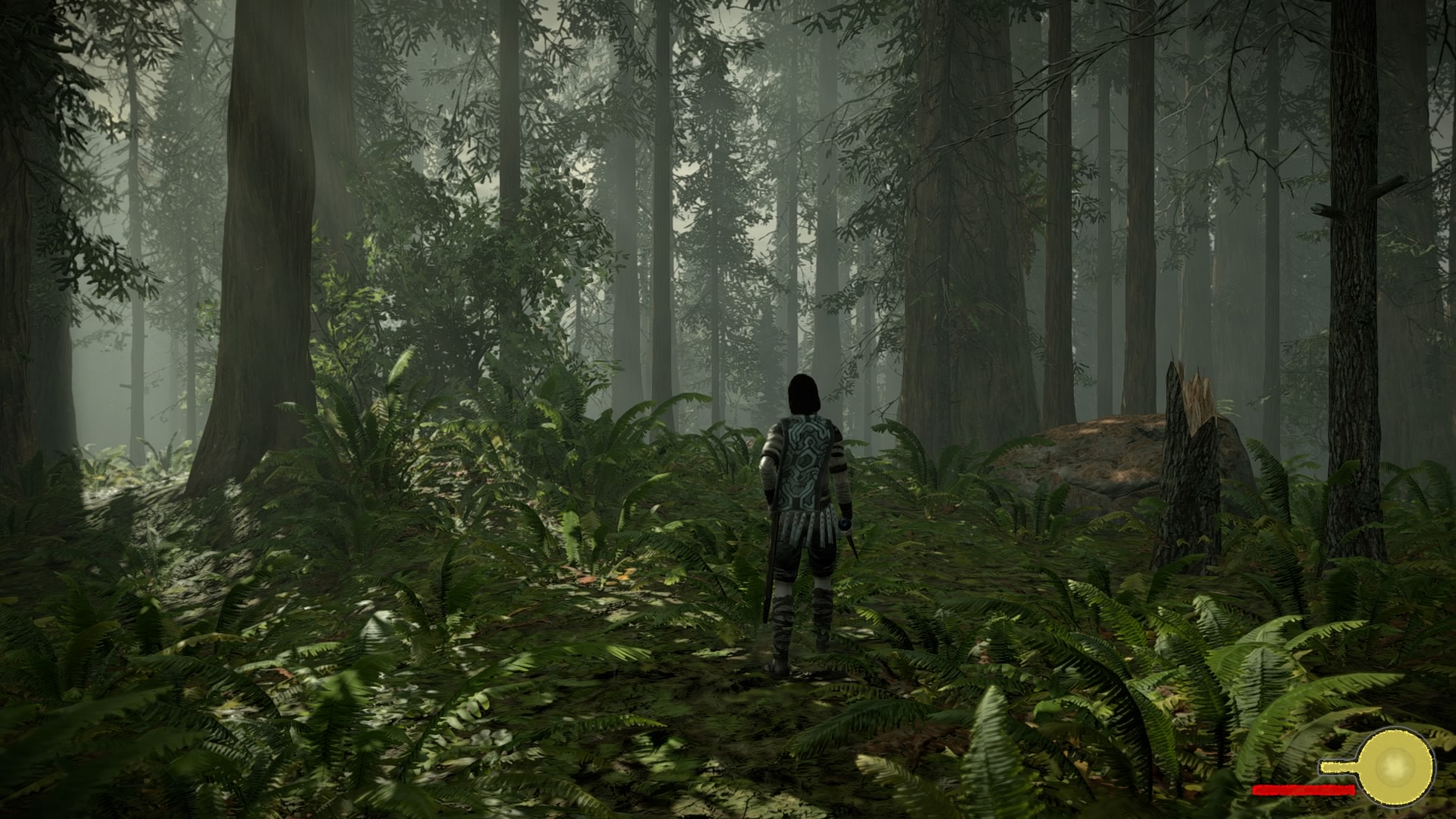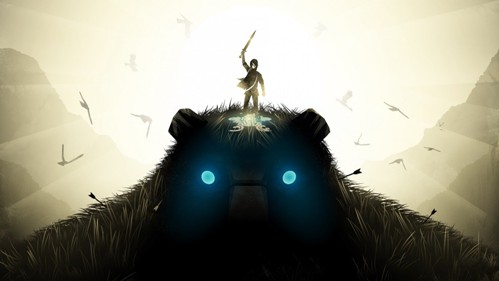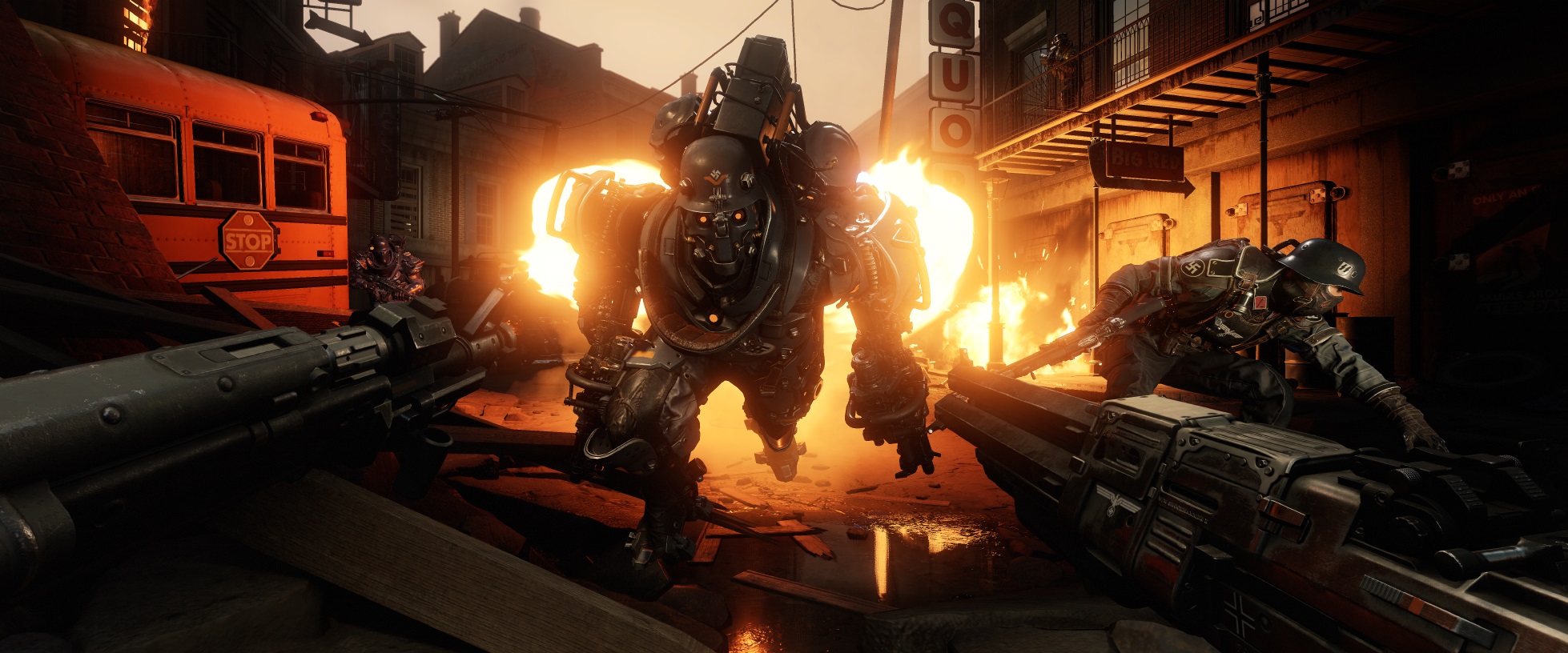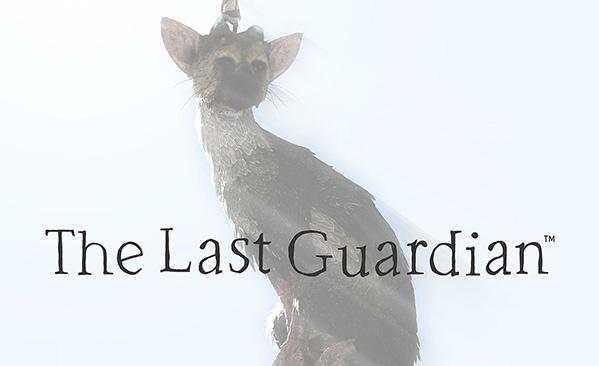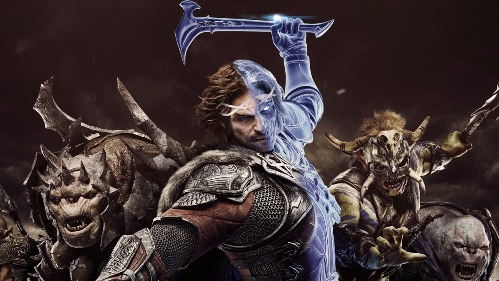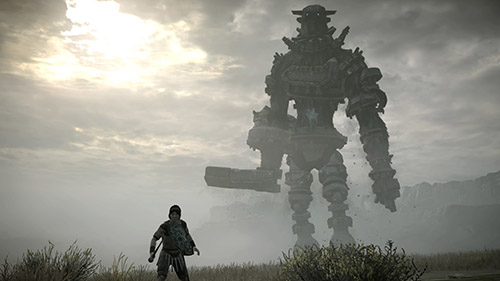
In the decade since its release, Shadow of the Colossus has become a common prime example in the ‘games as art’ debate. Astonishingly unique upon its launch and lauded with critical praise, the game’s singular focus and distinct look certainly lend credence to its candidacy. Originally a PS2 title, Shadow of the Colossus was re-released in HD and 3D on the PS3 by Bluepoint Games, who admirably ported the game and left the original art assets intact, albeit in a higher resolution. Now, Bluepoint have worked on yet another re-release of the game – or is it more accurate to call it a remake?
Shadow of the Colossus on PS4 is a complete visual re-working of the original, with nary a blurry PS2-era texture to be seen, and all assets updated to become super detailed, especially upon inspection on 4K displays (all images in this article were captured in 1080p on a regular PS4). The effects of this are plain to see – the game looks stunning. The game’s bonus features helpfully provide comparison screenshots to compare the remake to the original PS2 version, and the increase in realism and detail is astonishing. Cliffs composed of singular textures are now intricately modelled – forests are now brimming with colour, movement and spots of wandering light that’s hardly seen outside of an Uncharted title. Shadow of the Colossus comes with a new photo mode, which activating almost becomes a reflex every time you enter a new area or encounter a new monster. There’s hardly much to criticise, save a light wave of pop-in of detail in grass as you ride over large fields, but it’s still a marvel to behold. If you have a PS4 Pro, you can choose to run the game in 60 fps or in ‘cinematic’ mode with a higher dynamic range. However, even if you have just a regular PS4, the game looks amazing, and holds up at a stable and fast frame-rate as well.
Other elements of the game’s presentation remain unchanged, including the original voicework and the incredible orchestral score by Kow Otani.
The content and plot remain the same – Wander, a lone adventurer, ventures into the Forbidden Lands with the corpse of Mono, a recently-sacrificed maiden. He implores Dormin, a formless entity that resides there, to resurrect Mono and is informed that it may only be possible if he defeats the 16 colossi that roam the region’s valleys, deserts, lakes and temples. The quest Wander is on is a simple one, not far removed from Super Mario Bros.’s slay the dragon and rescue the princess, but it’s enough to set the stage for the game’s melancholy mood and increasingly tragic tale.
Shadow of the Colossus is entirely focused on its colossal colossi, and Wander’s efforts to bring them down. There are no other enemies in the game, save for the odd scurrying lizard you can choose to hunt. While taking place in an open world, you must fight each colossus sequentially, guided to it by your ancient sword and finding your way through vast empty plains. There’s generally no advanced environmental obstacles to overcome on your way, aside from a couple of annoying detours by way of your sword’s imprecise homing system, making your journey to each colossus one more of exploration than adventure.
Wander’s only ally is his horse, Agro, who famously was regarded as difficult to control in the original game. Not much has changed in this release, as Agro at times is happy to fully sprint across narrow bridges over vast chasms, yet at others can’t muster the effort to burst out of a slow trot. Yet, Agro grows on you, enough that you’ll find yourself taking time out of your quest to come to a full stop and give the old girl a pat every now and then – it’s a relationship that was so strong that it became the basis for the developer’s next title, The Last Guardian.
Shadow of the Colossus comes with a revised control scheme by default, although you can switch back to the classic controls at any time, and while the new controls better reflect current standards they don’t do an awful lot to help out. Indeed, riding on Agro while aiming your bow and arrow becomes an exercise in gripping your controller like in a colossus-like claw, using the new control scheme. Certain actions still feel heavy and sometimes unresponsive as well, such as jumping between climbable surfaces, as Wander sometimes refuses to unstick himself unless you’re aiming in juuust the right direction.
The main gameplay of Shadow of the Colossus of course comes from the colossi themselves. Ranging from the size of a tiger all the way up to a multi-story building, each of them is fearsome and formidable upon their first appearance. They’re strange combinations of living and inorganic matter – you’re never sure if it’s fur covering their bodies or perhaps some kind of grass. All of them have features which are almost architectural, like pieces of a temple – or entire temples themselves – which have sprung to life. All of them have magical ‘weak spots’ on their bodies which Wander must stab to bring them down, but reaching these points is unique to each beast. Some must be tricked, others scaled as their bodies are so massive they become levels in themselves. Often, as you reach the head of the colossus do you realise that they may be somewhat sympathetic creatures – dumb animals or at the very least beautiful parts of living nature, that you nonetheless have to destroy to progress.
Wander’s ability to climb these enormous creatures pales in comparison to other more modern protagonists. He doesn’t have the grip strength of Nathan Drake or Ezio Auditore, that’s for sure, as Wander’s stamina starts off as a very limited resource. He can hold on to the fur and ridges of a colossus to scurry up, but once it starts trying to shake him off, it takes all of his strength just to hold on, let alone move. It is a very effective way to create some tense moments where you’ll have to find places to rest and re-fill your stamina on a colossus, or just try risking it all to get in one last hit to its weak point.
There are some more tangible differences that have been made to update Shadow of the Colossus‘ gameplay for modern audiences. Chief among these is the save system, which now runs as an autosave function. This leaves the save shrines which dotted the landscape in the original as places to save your progress, without their original function – praying at these now will refill your health. They also still have silver-tailed lizards scurrying about, which can be hunted for small increases to your stamina.
However, for all the improvements in presentation that Shadow of the Colossus on PS4 provides, it’s arguable how these changes affect the game as a piece of art, if it is indeed one. Certain parts of the colossi, which may have looked earthen or unclear before, are now unmistakably patches of rough skin. The central castle of the Forbidden Lands now has so much detail it’s like something out of Dark Souls rather than the simpler structure made of pale stone from the original. The original game went overboard with bloom and bleached skies, which has been drastically pulled back across the board on the PS4. Of course, Team Ico was limited by the technology of the PlayStation 2 at the time, and director Fumito Ueda submitted ideas for improvements in this PS4 version, but it’s unknown how much of this made it in. There’s likely a debate to be had about whether the remake fits the original author’s intent, as it were. Personally, the game still felt the same emotionally and thematically, where it counts, but I suppose it’s part of a larger issue about remakes and definitive issues of games.
At a budget price point of AU$49, Shadow of the Colossus on PS4 is smartly positioned for fans to double-dip, or even triple-dip, by purchasing it again, and the massive visual overhaul is genuinely worth another playthrough. If this is your first time with the game, then it’s a no-brainer, even ten years on with slightly wonky controls, Shadow of the Colossus is a masterpiece of creativity and focused game design.
-Stunning visual remake, with Ultra Hi-Def assets -Memorable, unique boss battles -Vast, lush world to explore, with some secrets to find -Outstanding soundtrack
-Controls, even the modernised versions, can still be unwiedly

